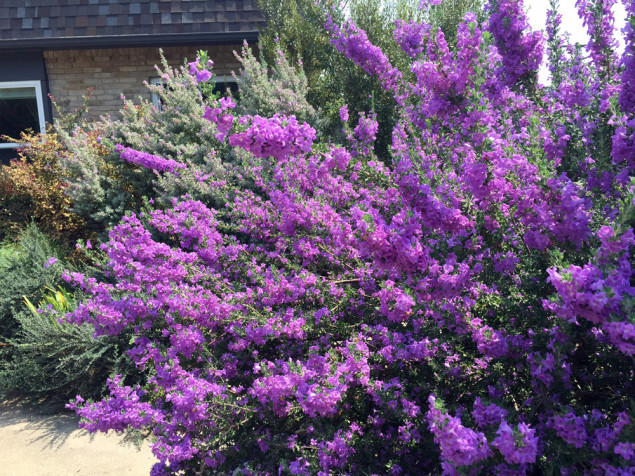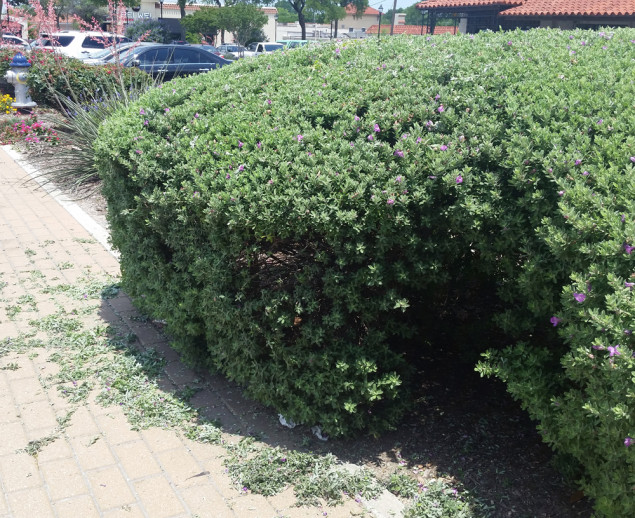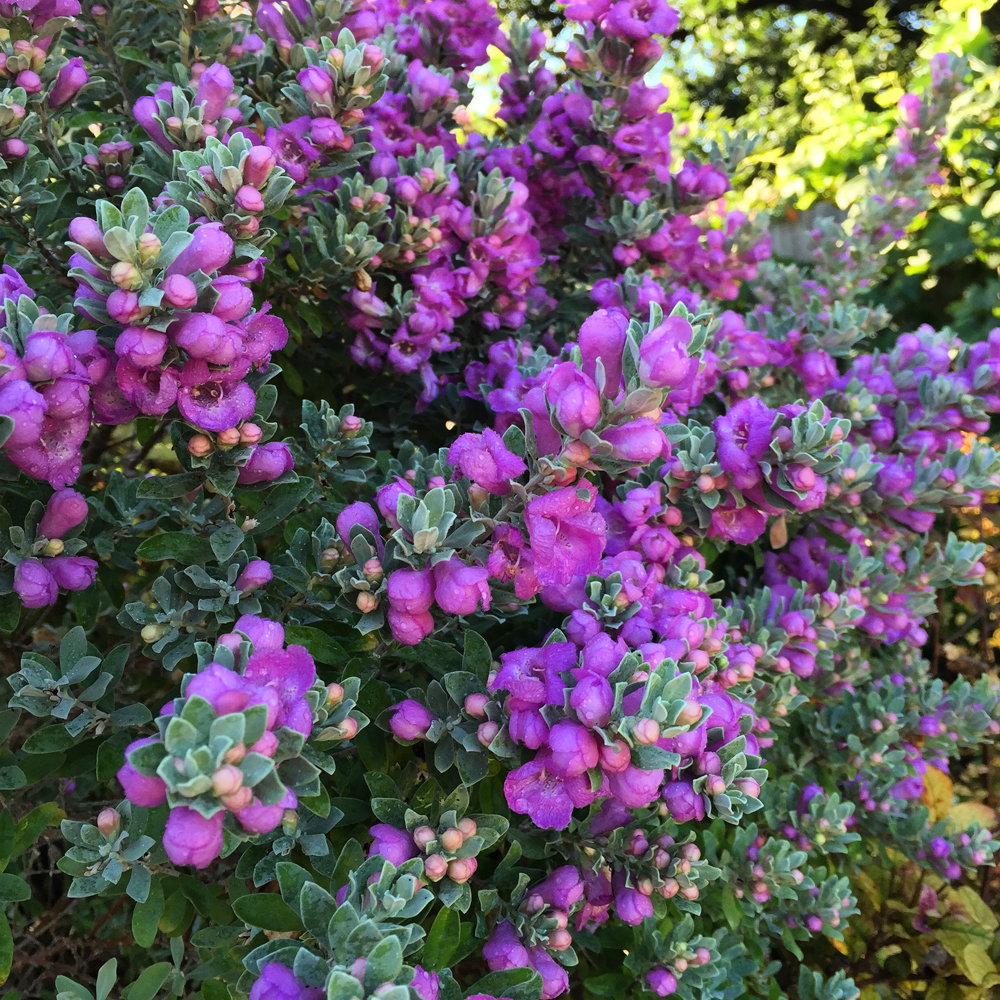Dallas is awash in purple, thanks to the recent rare bout of August rainfall and humidity. You may have noticed a bevy of Texas sage blooms around town for the past week or so and wondered what brought on the blooming frenzy.
What makes them bloom?
Texas sage respond to a couple of different signals that tell them it’s time to bloom. High humidity or sudden soil moisture before and after rainfall will push plants to bloom; seemingly overnight. Texas sage plants are sometimes called “barometer bush” due to this effect. The recent unexpected humidity and rainfall we experienced last week was just what your Texas sage plants have been waiting for.

Texas sage are one of the prettiest and toughest of Texas native shrubs. Plants are mostly evergreen and produce stunning silver foliage that perfectly complements the lavender to purple blooms. There are a number of varieties to choose from, most growing to an average of 5-feet tall and wide. If you need something smaller, keep your eyes peeled for dwarf varieties such as ‘Thunder Cloud’. If you want something a bit more expansive and impressive seek out ‘Rio Bravo’. It grows 5 to 6-feet tall and wide and is a heavy bloomer.
Texas Sage thrives in full sun and well-drained alkaline soil. They will tolerate a bit of shade, but too much shade will result in leggy plants that don’t bloom heavily. Supplemental water in summer will help plants grow faster and bloom more, but over-watering or poor drainage will kill Texas sage quickly.
Crimes against horticulture
When it comes to certain shrubs, au natural is the way to go. Texas sage is one such shrub. One of the worse horticultural offenses committed here in Dallas is the constant shearing of Texas sage shrubs into what I can only describe are large caterpillars…or balls. WHY? Please don’t.

1. Continual shearing of Texas sage will weaken them…and kill them.
2. You lose all the blooms when you shear them (so why plant them in the first place?)
3. They look terrible. Just, terrible.
So pretty please, put the hedge shears away and let these beauties do their thing.
As we head into fall, it’s a great time to start refreshing the landscape and adding new shrubs and trees such as Texas sage.





